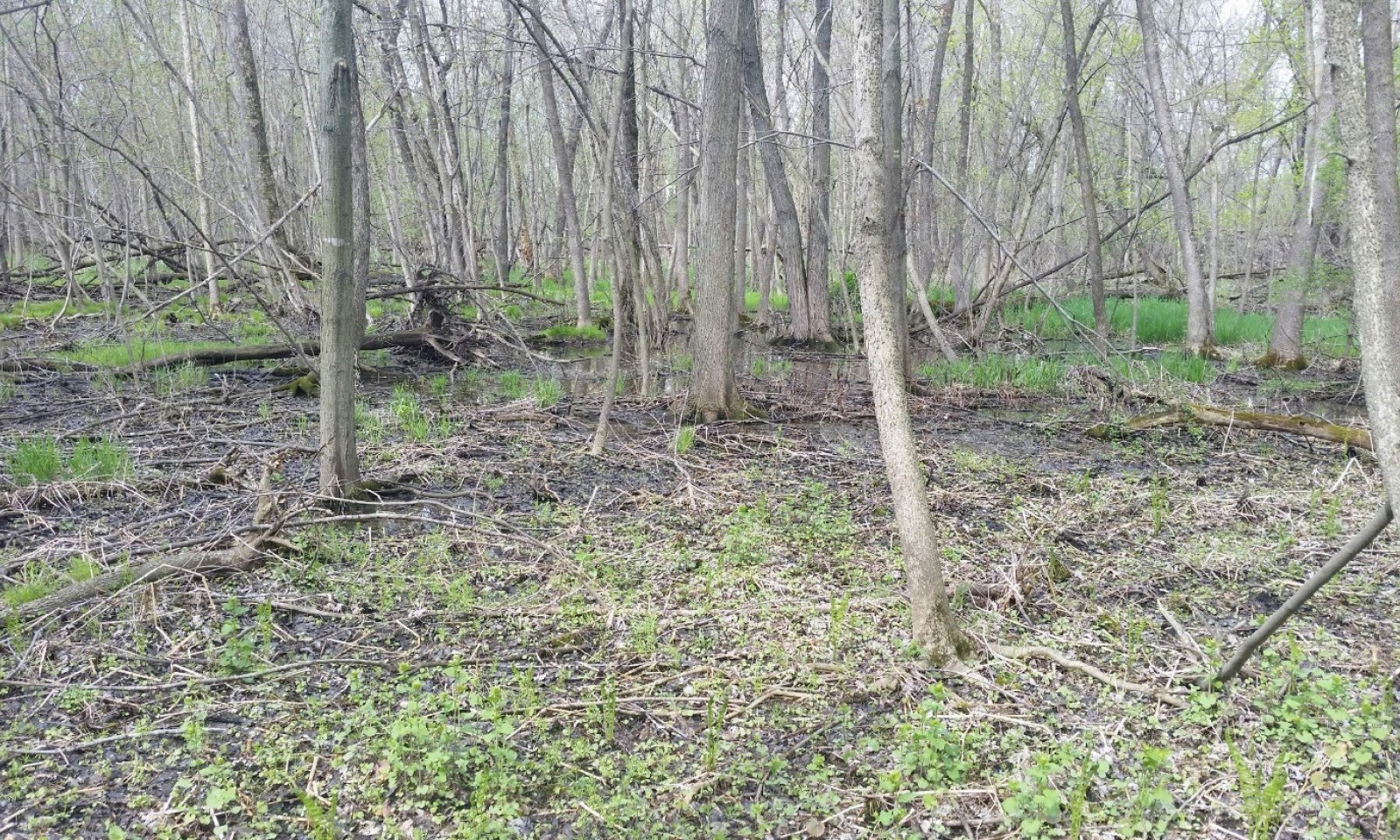
Organic Wet Meadow/Carr
Scenario model
Current ecosystem state
Select a state
Management practices/drivers
Select a transition or restoration pathway
-
Transition T1A
Disturbances alter plant community structure and composition
More details -
Restoration pathway R2A
Restoration of native plant species and hydrological function
More details -
No transition or restoration pathway between the selected states has been described
Target ecosystem state
Select a state
Description
The Reference State plant community is influenced by intermittent to fluctuating ponding during the wet months of the year. Dominant species include scattered tamarack, alder, willow, hairy sedge, and upright sedge. Increases in depth and duration of ponding will favor a transition to a shrub swamp with an increase in willows and dogwood. Tiling or ditching of adjacent areas can negatively impact the natural hydrology of this site. The reference state condition is uncommon in MLRA 103.
Submodel
Description
The Degraded Marsh State is characterized by one or more disturbance triggers. These disturbances could be hydrologic alterations, non-native plants species, cattle grazing, or long-term fire suppression which allows for an increase woody plant species. Common species include narrowleaf cattail (Typha angustifolia), hybrid cattail (Typha × glauca), reed canarygrass (Phalaris arundinacea), common reed (Phragmites australis), and various shrubs and tree saplings. Plant community composition will be influenced by the type, severity, and duration of disturbances as well as the depth of ponding. Variations in plant composition and structure may include a cattail community, a wet grassy community (reed canarygrass, common reed), or a mix of cattails and grasses with woody shrubs.
Some sites in this state may be conservation easements. Areas not in a conservation program are assumed to be jurisdictional wetlands, making it very unlikely they will be transitioned to agriculture due to various wetland programs and laws, including the Swampbuster provision of the Food Security Act of 1985 (P.L. 99-198, as amended by P.L. 115-25) and the Minnesota Wetland Conservation Act (WCA) of 1991 (M.R. 8420.0100, as amended in 2009).
Submodel
Description
Tillage and drainage are the primary mechanisms for transitioning this site to agriculture production. Most areas now utilized for agriculture were transitioned to State 3 prior to current wetland protection regulations.
Soil tillage affects dynamic soil properties such as bulk density, structure, organic carbon content, and saturated hydraulic conductivity. Hydrological modifications (tiling and ditching) may be installed to improve drainage, so natural hydrology is also altered. Most areas in this state will remain in crop production in the foreseeable future – primarily in an intensive corn and soybean rotation. Conservation practices can mitigate the impacts of traditional agricultural practices on soil health. Conservation tillage minimizes soil disturbance and can improve soil structure and overall soil health. Corn or soybean plantings and a cover crop rotation can build soil structure, improve infiltration rates, reduce runoff and erosion, and protect water quality.
Some areas within this ecological site may have been seeded to grass or have reverted to a scrubby woodland. However, this is a small percentage of acres within the MLRA, so these communities are not currently included in the state and transition model.
Submodel
Mechanism
Disturbance triggers such as non-native vegetation, cattle grazing, or hydrological changes alter the native plant community.
Model keys
Briefcase
Add ecological sites and Major Land Resource Areas to your briefcase by clicking on the briefcase (![]() ) icon wherever it occurs. Drag and drop items to reorder. Cookies are used to store briefcase items between browsing sessions. Because of this, the number of items that can be added to your briefcase is limited, and briefcase items added on one device and browser cannot be accessed from another device or browser. Users who do not wish to place cookies on their devices should not use the briefcase tool. Briefcase cookies serve no other purpose than described here and are deleted whenever browsing history is cleared.
) icon wherever it occurs. Drag and drop items to reorder. Cookies are used to store briefcase items between browsing sessions. Because of this, the number of items that can be added to your briefcase is limited, and briefcase items added on one device and browser cannot be accessed from another device or browser. Users who do not wish to place cookies on their devices should not use the briefcase tool. Briefcase cookies serve no other purpose than described here and are deleted whenever browsing history is cleared.
Ecological sites
Major Land Resource Areas
The Ecosystem Dynamics Interpretive Tool is an information system framework developed by the USDA-ARS Jornada Experimental Range, USDA Natural Resources Conservation Service, and New Mexico State University.
